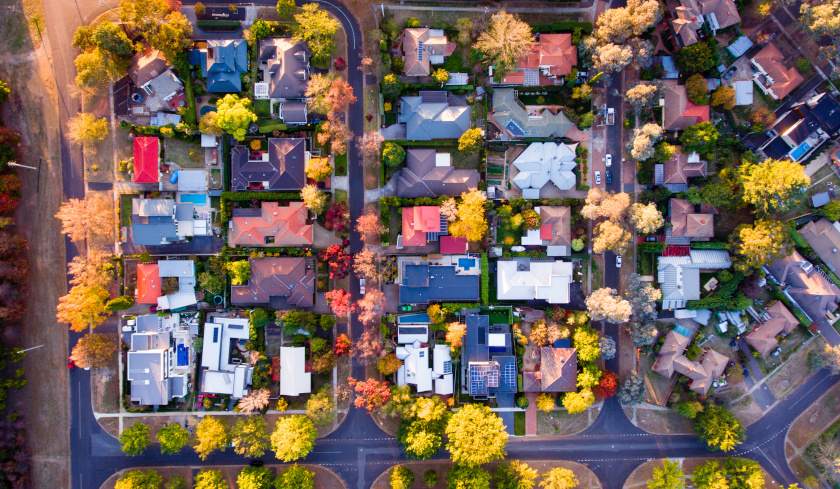Invest
Homebuyers grapple with extended savings period amid affordability crisis
Invest
Homebuyers grapple with extended savings period amid affordability crisis
Gone are the days when an Australian dream home seemed just within reach. The path to homeownership in Australia has extended by at least two arduous years, as revealed by the latest insights from PEXA's research.
Homebuyers grapple with extended savings period amid affordability crisis
Gone are the days when an Australian dream home seemed just within reach. The path to homeownership in Australia has extended by at least two arduous years, as revealed by the latest insights from PEXA's research.

The findings, which shine a light on the escalating challenge facing prospective buyers, underscore the harsh reality of the country's housing market.
In New South Wales, the time it now takes to squirrel away enough for a home deposit has almost doubled from a little over four years in 2020 to nearly eight years today—an eye-watering increase of 83.2%. With sights set on Victoria, a would-be homeowner will find themselves saving for five and a half years, up from just over three years—accounting for a 64.2% spike. In Queensland, the journey has been lengthened to over five years from under four years in early 2021, up by 36.9%.
Peering into the numbers, the FY23 median home deposit amount stands at an imposing $119,969 in NSW, with Sydney scaling even higher at $145,000. Victoria's median deposit hovers at $84,723, whereas Melbourne sees a steeper $94,000. In Queensland, figures tally up to $78,143, with Brisbane marginally higher at $85,163.
Highlighting the grim picture further, deposit-to-value ratios (DVRs) have reached 20% across all eastern states. For those aiming at the more affordable homes under $500,000, the DVRs sit at 16-18%. In contrast, the premium property market—homes priced at $2 million and above—demands DVRs of 27-30%.

PEXA's Head of Research, Mike Gill, unpacks the consequences of this unfolding scenario. "With higher interest rates and rising property prices, the time to save for a deposit has increased significantly over the past few years. This has made the generational wealth gap more apparent, with younger demographics facing growing challenges to enter the property market," remarked Mr Gill.
The research found that average loan-to-value ratios (LVR) reached their zenith at around 83% at the end of 2020, amidst the COVID pandemic. This meant that home purchasers previously needed to furnish a deposit of merely 17%. Fast-forward to the present, tightened credit standards and climbing interest rates have pushed the required deposits upwards, putting additional years' worth of savings between Australians and their ideal homes.
“Our research found average loan-to-value ratios (LVR) peaked at around 83% at the end of 2020 during the onset of the COVID pandemic, meaning homebuyers needed to put down a deposit of only 17%. However, as lenders have tightened credit standards in response to increased interest rates, LVRs have trended downwards, increasing the deposits required. Coupled with high property prices, home buyers now need to work for at least two years longer to save for their home deposits," elucidated Mr Gill.
Delving deeper into FY23 findings presents a daunting vista. Across the eastern states, the total value of deposits amounted to a staggering $62.2 billion, partitioned into $27.2 billion for NSW, $20 billion for Victoria, and $15 billion for Queensland. The necessity for lenders mortgage insurance persisted in more than half of the purchases.
Moreover, while the loan-to-value ratios appeared higher among the major banks as opposed to non-major lenders, it implies that major banks may be more inclined towards borrowers with lower deposits, possibly due to the visibility of the borrower's financial background.
In the narrative of Australia's housing market, the burden of extended saving periods illuminates the widening divide between income brackets, generational equity, and the ever-lengthening Australian dream of homeownership. With this in-depth research in hand, industry stakeholders and policymakers might need to take a closer look to find ways to bridge the gap and render the pathway to homeownership a more attainable pursuit for all Australians.

Property
North platform adds household reporting feature to boost adviser efficiency
AMP's North platform has launched consolidated household reporting across multiple client accounts, helping financial advisers streamline their client review processes. Read more

Property
What Adds The Most Value To Properties?
Wondering how to up the value of your property? Properties are worth a lot of money in general, but there’s always a way to maximise value. The good news is that most of the things you can do to ...Read more

Property
Centuria reports strong growth in alternative real estate sectors for FY24
Centuria Capital Group has reported significant growth in alternative real estate sectors for the 2024 financial year, driving stable performance and increased guidance for FY25. Read more

Property
How to leverage equity in your home for investment or renovation
Home equity, the value of your property minus any debts owed, is a powerful financial resource many homeowners in Australia can utilize to further their financial goals. Whether you're looking to ...Read more

Property
Exploring REITs: Real estate investment without buying property
Real Estate Investment Trusts (REITs) offer a compelling investment alternative for those interested in the real estate market but may not want to endure the complexities and capital requirements of ...Read more

Property
Retirement communities: a pivotal element in meeting Australia's housing targets
The Retirement Living Council (RLC) has recommended that retirement communities should be considered a vital part in the Australian Government's initiative to fulfill the Housing Australia Future Fund ...Read more

Property
Australians adjust financial strategies amid changing property market dynamics
The 2023 calendar year saw Australian borrowers acquiring a total of $300.9 billion in new loans for property purchases, marking a 12.7% decrease from the previous year. Read more

Property
Split home loans unlocking doors for Aussie buyers
Australians are teaming up to dive into the real estate market and seize the advantages of home ownership, with the trend of split home loans surging as family and friends unite to buy properties ...Read more

Property
North platform adds household reporting feature to boost adviser efficiency
AMP's North platform has launched consolidated household reporting across multiple client accounts, helping financial advisers streamline their client review processes. Read more

Property
What Adds The Most Value To Properties?
Wondering how to up the value of your property? Properties are worth a lot of money in general, but there’s always a way to maximise value. The good news is that most of the things you can do to ...Read more

Property
Centuria reports strong growth in alternative real estate sectors for FY24
Centuria Capital Group has reported significant growth in alternative real estate sectors for the 2024 financial year, driving stable performance and increased guidance for FY25. Read more

Property
How to leverage equity in your home for investment or renovation
Home equity, the value of your property minus any debts owed, is a powerful financial resource many homeowners in Australia can utilize to further their financial goals. Whether you're looking to ...Read more

Property
Exploring REITs: Real estate investment without buying property
Real Estate Investment Trusts (REITs) offer a compelling investment alternative for those interested in the real estate market but may not want to endure the complexities and capital requirements of ...Read more

Property
Retirement communities: a pivotal element in meeting Australia's housing targets
The Retirement Living Council (RLC) has recommended that retirement communities should be considered a vital part in the Australian Government's initiative to fulfill the Housing Australia Future Fund ...Read more

Property
Australians adjust financial strategies amid changing property market dynamics
The 2023 calendar year saw Australian borrowers acquiring a total of $300.9 billion in new loans for property purchases, marking a 12.7% decrease from the previous year. Read more

Property
Split home loans unlocking doors for Aussie buyers
Australians are teaming up to dive into the real estate market and seize the advantages of home ownership, with the trend of split home loans surging as family and friends unite to buy properties ...Read more








